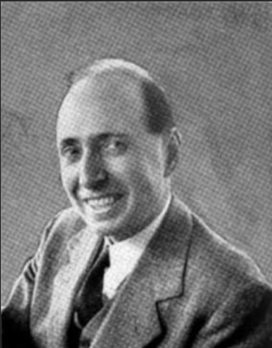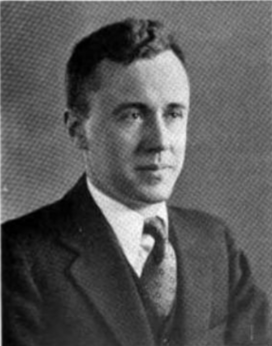Princeton, Albert Einstein, and the Bomb
University scientists loom large in story of atomic energy project...

The story of the atomic bomb came full circle at Princeton. In this center of the early study of atomic energy—where, for instance, the classic paper on the fission process was prepared by Dr. Niels Bohr, Danish physicist, and Dr. John A. Wheeler, of the University—was conceived the idea of enlisting the manpower and resources of the nation to develop the atomic bomb, and here was written the War Department’s official history of the gigantic cooperative project.
The movement to gain government support for atomic research was initiated in July, 1939, by Professor Eugene P. Wigner, University Physicist—a central figure throughout the story of the atom bomb—and Dr. Leo Szilard, Hungarian physicist. They conferred with Dr. Albert Einstein, of the Institute for Advanced Study, and, subsequently, the three scientists discussed the matter with Alexander Sachs, New York banker. Mr. Sachs, supported by a letter from Dr. Einstein, aroused the interest of President Roosevelt.
Six years later, the success of the project thus initiated was to be recounted by a colleague of Dr. Wigner, Professor Henry DeWolf Smyth, chairman of the University department of physics, in the account which he wrote at the request of the War Department. A public edition of this 60,000-word story of the unprecedented scientific and organizational accomplishment—one of the great documents of the ages—has just been published by the Princeton University Press.

University personnel made major contributions to the atomic bomb and important research was conducted in laboratories on the campus. The official report, among its fifty references to Princeton and its scientists mentions specifically the work of eight colleagues of Professor Smyth. The men named are Edward E. Creutz, physicist, Richard P. Feynman, physicist, Luther P. Eisenhart, mathematician, Hugh S. Taylor, chemist, Louis A. Turner, physicist, Dr. Wheeler, Dr. Wigner, and Robert R. Wilson, physicist.
Atom bomb research was conducted in Palmer Physical Laboratory and Frick Chemical Laboratory. As early as February, 1941, physicists were busy on experiments which gave data used in planning the first successful experiments on the nuclear chain reaction. This was carried on under Professor Smyth by Dr. Wilson, Dr. Creutz and others with the advice of Drs. Wheeler and Wigner.
The chemists also made an early start. Dean Taylor who, in 1943, became associate director of the experimental plant established at Columbia University discovered at Princeton, in work that had begun in 1941, the most effective catalyst for producing heavy water by interacting hydrogen and steam.
Among the important work carried on on the campus, also, was the conceiving and evolving, by Professors Smyth and Wilson, of a novel electromagnetic method of separating uranium isotopes.
Judging from the report’s almost constant repetition of his name and its description of his contributions, Dr. Wigner, Thomas B. Jones Professor of Physics, would appear to be one of the central figures of the story, from beginning to end, of the atom bomb.
Professor Wigner is renowned among his colleagues for his many contributions to the understanding of nuclear physics, particularly in the development of the so-called Breit-Wigner dispersion formula which is used for the calculation of the probabilities of those processes which are of importance in the production and use of plutonium.
After his collaborative efforts with Dr. Szilard, Dr. Einstein and Mr. Sachs had enlisted the support of President Roosevelt and the project became a national enterprise, Dr. Wigner was a consultant or member of national committees concerned with the problem and played a leading part in the designing of production units. In the latter category was an important report which was subsequently followed in the design of the Hanford, Wash., plant for the production of plutonium, a key material used in the atomic bomb.
In addition to writing the report on the project, Professor Smyth was a member of national scientific committees, including a five-man group appointed by Maj. Gen. L. R. Groves, head of the gigantic program, to study peace-time uses of this new source of power.
Professor Smyth was associate director of the Metallurgic Laboratory, established at the University of Chicago, which was a major center of nuclear physics research. In addition to his varied activities in the atomic bomb program he continued his administration of the Princeton physics department. Three-quarters of the staff of this department, as constituted in 1941, have engaged in atomic bomb research, and the remaining one-quarter in other war research projects.
Beginning in December, 1941, Professor Smyth conducted a research program with Dr. Wilson on the separation of isotopes by means of a new method. The device, invented by Dr. Wilson for this purpose, was called the “isotron.” The research had progressed to the point where the method was shown to be successful on a small scale but its large-scale applicability was not fully investigated.
The work was discontinued in February, 1943, to allow the transfer of the group of physicists to do extremely urgent work at the new atomic bomb laboratory constructed in the desert at Los Alamos, near Santa Fe, N.M. The sudden exodus of this group, without explanation, puzzled Princetonians, particularly the landlords involved, who were further mystified when letters received from the departed scientists continued to bear Princeton post-marks.
Three carloads of apparatus from the Princeton project were shipped to Los Alamos to fill some of the most pressing needs of the new laboratory. Dr. Wilson later became head of the experimental nuclear physics division of the laboratory.
The Smyth report recalls the early association of Princeton with the investigation of atomic fission. An important contribution to the fundamental understanding of nuclear fission was made by Professor Wheeler in a joint paper with Professor Bohr, Danish Nobel Prize winner, in which they first explained the fission process in terms of the “liquid-drop” model of the atomic nucleus.
Evidence of the intense interest by Princeton physicists in this new process which was later to be the key to the atomic bomb is provided by the complete summary report of the work in this field published in the January 1940 Review of Modern Physics by Professor Turner. Professor Wheeler had been a member of national committees engaged in the War Department project and has played an important part in the design of plants. Professor Turner was drafted for another phase of war research—work on radar at M.I.T.
Dr. Feynman is credited, by the report, with producing calculations on a certain type of electro-magnetic separators. Dr. Creutz developed methods of fabricating and coating uranium metal.
Professor N. Howell Furman, of the department of chemistry, also engaged in atomic bomb research, heading a team of analytical chemists. It is known, also, that Professor Joseph C. Elgin, chairman of the department of chemical engineering, was engaged on a project in his field.
This was originally published in the September 28. 1945 issue of PAW.











No responses yet